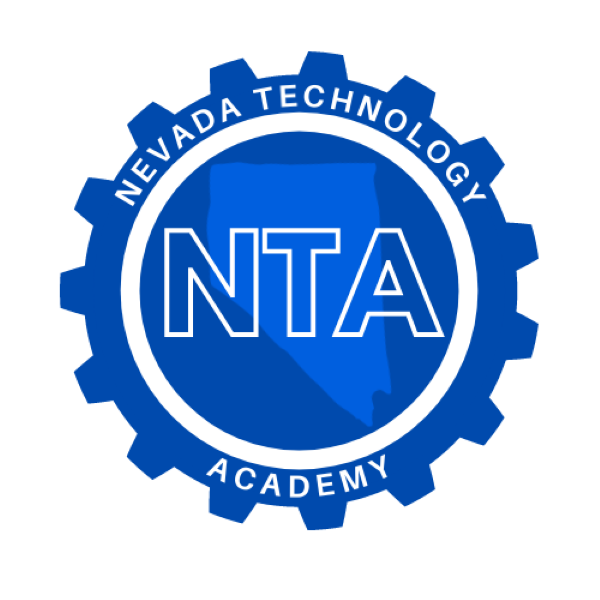Celeste Hanford • May 3, 2020
Pioneers in Tech - Women's Addition
I remember in my 4th grade history class
seeing photos of women standing in front of
large machines during World War II and
asking my teacher what those women did.
My teacher at the time said that they were
posing in front of the machines because they
were easy on the eyes. I thought to myself,
“With Rosie the Riveter representing the
working woman there is no way that these
women were merely ‘eye-candy’.” I
attempted to learn more about the women
only to be dismissed, and eventually I let it
go. I never quit wondering why those
women were standing in front of that
machine. As societal norms have changed
so has the perspective from which history is
told. Women pioneered Computer Science
alongside men. Women’s History is being
uncovered by dedicated researchers, and
journalists.
It all started with Ada Lovelace, formerly
Lady Ada Byron, daughter of poet Lord
Byron. When her father went insane her
mother believed that math would cure her
creative desires. Ada became one of the best
mathematicians of her time as a teenager.
She met Charles Babbage and his prototype
for The Analytical Machine at a party. Ada
was the only person at the party who shared
his passion for mathematics, and his
machine sent her over the top.
His Scottish housemaid was Wilhelmina
Fleming, and her team included Annie Jump
Cannon, and Henrietta Leavitt among 20
others. These women are responsible for
creating star classification system,
discovering the Horsehead Nebula, and
foundations for Hubble’s Law. Pickering’s
Women were some of the first “Human
Computers”. A “Human Computer” is a
mathematician responsible for checking,
writing, and calculating complex problems.
During World War I, the military looked to
Human Computers for help. Alice Lee, and
the Cave Sisters, Beatrice and Francis,
helped create trajectories for artillery shells
during World War I. Alice was more than
just a mathematician, and her dedication to
biology discredited the idea the women’s
skulls contained less capacity than a man’s
skull. Frances Cave is now recognized as
“The Mother of Meteorology”. Beatrice Cave
helped design airplanes but this was covered
up in The Official Secrets Act. Beatrice, along
with many others, were never recognized for
their contributions due to secrecy and
societal norms.
As Tensions increased during WWII men
shipped off and women took their places
at home. The Women of Bletchley Park,
black women included, worked day and
night to crack Enigma. The Enigma was a
cryptographic machine used to encode
German and Italian correspondence.
Over 100 women worked at Bletchley
secretly for the war effort. Some worked
very closely with Alan Turing, some were
debutantes, some were Opera Singers,
some were actresses, and some
were even spies. Many of these women
were members of WRENS, including Grace
Hopper. Dubbed the “Queen of Software”
this Harvard Computing Lab member
created the first A-0 compiler, wrote the
COBAL computing language, and helped
with UNIVAC. Just like the women
working with the military during WWI, The
Moore’s Computing lab created ballistics
tables to improve speed and accuracy.
Moore’s Computing lab was responsible
for creating the first computers: UNIVAC,
BINAC,and ENIAC. The Human Computersbehind the scenes are Jean Bartik Jennings,
Betty Holberton, Kathleen Antonelli, Ruth
Teitlebaum, Frances Spence, and Marie
Wescott Meltzer. These were the women
from the photograph, and thanks to Kathy
Kleiman’s research their story can be told in
The Computers documentary film. They
were not “eye-candy”; they were some of the
first computer programmers in
existence. No matter their contribution
these women were essential to saving lives.
Have you ever heard of The Manhattan
Project? This project consisted of several
facilities during WWII focused on nuclear
testing. Manhattanvoicesproject.org
compiled oral histories from those involved
in the Manhattan Project, many of which
were women. They were spread out across
many locations and worked in critical
secrecy to create the world’s deadliest
weapons. Leis Meitner established the first
theory of nuclear fission, and actually created
the term “nuclear fission.” About 70
people in total in the science and technician
fields were held by women. Thanks to all of
the efforts of The Manhattan Project's
research on plutonium and uranium the
Allies won WWII with the nuclear bomb.
This technology also helped create good
things like MRI machines, cancer treatments,
and power generators.
When WWII ended many women, who
helped create and design computing
machines were being displaced by
returning veterans looking for work.
Women persevered by continuing to
push the limit. Women, of all races, are
responsible for societal advancement in
technology and science especially. If you
have a home alarm system you can thank
Marie Van Brittan Brown. Her husband
would work long hours so she created an
alarm system equipped with two-way
microphones, alarms, and remote locks.
If you know someone who’s had cataracts
removed then you can thank Patricia Beth
for her work in lasic. If you use GPS to get
where you want to go you can thank Dr.
Gladys West. In 2018 she was inducted
into Missile Pioneer’s Hall of Fame for
modeling the Earth. If you use BlueTooth
on your trip you can thank Ms. Hedy
Lemarr. During WWII she helped develop
missile guiding systems for torpedoes
using spectrum hopping. This technology
made the first versions of WiFi, and
BlueTooth possible. In 2014 she was
inducted into the National Inventors Hall
of Fame.
Even the moon landing trajectories were
calculated by women. In the 2016 film
Hidden Figures the hidden story of four
African-American mathematicians
advanced the space race. It all started at
Langley Research Center. During World
War I Langley Research Center was
established by the National Advisory
Committee for Aeronautics (NACA) as the
first aeronautics research center in 1917.
This establishment housed the largest
constructed wind tunnel which remained
active until the 1940’s. The fuel that kept
these projects going was generated by
Human Computers. In the short video
documentary, “When Computers Were
Human” Vera Huckle, Hellen H. Willey, and
Marie Butcher were asked about their time
at Langley. Ms. Huckle was in a leadership
role and organized NASA’s computer
systems. She ended up staying with the
company for 31 years, and advocated for
other women’s advancement in
mathematics. Hellen H. Willey continued
to work at NASA for 33 years as well. These
women were all grossly underpaid and
considered “sub-employees”. Langley
Research Center soon grew from about
900 to over 3,000 employees as the space
race picked up speed.
During this time both black and white
women worked side by side calculating
the trajectories, false gravity, and wind
tunnel experiments that would help us
win this race. Although they liked one
another’s company these women were
segregated for housing and dining
facilities as set forth by President Wilson’s
segregation laws. Enter the initial four
women I mentioned: Katherine Johnson,
Dorothy Vaughan, Mary Jackson, and
Christine Darden. Dorothy Vaughan was
one of the first African-American
supervisors at Langley and dedicated
almost 30 years of her life to advancing
aeronautics. Katherine Johnson, who was
briefly on Vaughan’s team, and calculated
the trajectory that sent Alan Shepard into
space. She also helped calculate the
trajectory of the Apollo 11 flight that took
Americans to the moon. Katherine
dedicated her life to science and
technology. During her final years she
worked hard to provide STEM
opportunities to women. Mary Jackson
was recruited to work at NACA in 1951 as a
research mathematician. A colleague
encouraged to further her education to
participate in the wind tunnel
experiments as an engineer, so she did.
By 1971 she had actually earned the
highest title within the engineering
department at Langley.
Christine Darden was recruited by NASA,
formerly NACA, to be part of the
“computer pool”. She kept working to
improve her education and eventually
became an innovator for sonic boom
technology. For many decades these
women, as well as many others mentioned
in this article, weren't recognized. In 2015
President Barack Obama awarded
Katherine Johnson The Congressional
Medal of Freedom. Our current President,
Donald Trump, awarded these
four women The Congressional Gold
Medal of Honor in November, 2019. There
are 17 Congressional Gold Medals of
Honor awarded to women including
Mother Teresa and Rosa Parks. NASA also
renamed one of their Virginia Facilities,
"Katherine Johnson Independent
Verification and Validation Facility."
A few more women who deserve to be
mentioned are Jeanne Crews, Sally Ride
and Stephanie Kwolek. Jeanne Crews
helped develop the protective sheeting for
spacecraft for the international space
station. It is a material lighter and stronger
than aluminum. When Stephanie Kwolek
created Kevlar while working at Dupont,
they almost threw it away because it came
out a milky color instead of clear. She
fought for her work to be tested, and it
turns out she created a fire-resistant fiber
stronger than steel.
Sally Ride started working for NASA in
1978. She started working at NASA shortly
after earning her PhD in Physics at
Stanford University. Sally Ride was the first
woman in space, and she was also the
youngest person to ever travel to space.
She has spent over 300 hours of her life in
space. After her time at NASA Sally
dedicated much of life to advocating
science in upper elementary, and middle
school for girls. These ladies are just a few
that made it all possible.
There are so many more women who
deserve to be acknowledged outside of
this small school newspaper article. I hope
learning about some of the great things
women have done for the world have
inspired you to learn more. No matter
their contribution, big or small,
the female sex certainly contributed to
creating our connected world. We can all
achieve our dreams with the
ability to adapt and advance in mind.
No one said it would be easy; they said it would be worth it.














